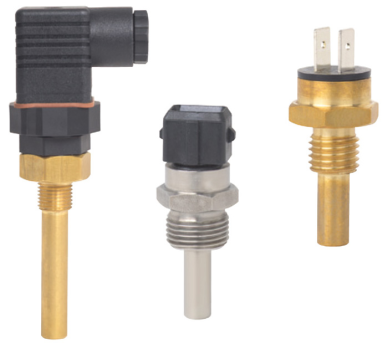
Temperature switches are used in a broad range of applications, including to prevent the overheating or overcooling of industrial machines found in the agriculture, construction, and material handling industries.
When it comes to temperature monitoring, the first thing that probably comes to mind is a temperature measuring device such as a thermocouple or an RTD. After all, having a clear and accurate temperature reading is crucial across applications. However, simply knowing the temperature isn’t enough in most cases; maintaining a certain temperature range is often necessary. That’s where temperature switches come in.
What Is a Temperature Switch?
Temperature switches (sometimes called thermal switches) are devices that monitor temperatures and can open and close switch contacts in order to maintain proper operating temperatures. In other words, they prevent overheating and overcooling.
There are two primary types of temperature switches.
- Mechanical temperature switches, which come in bimetal and gas-actuated varieties
- Electronic temperature switches, which require an electrical power source to operate
Mechanical temperature switches
Mechanical temperature switches can be utilized across a broad range of applications, especially in industrial machines and mobile working machines in the agriculture, construction and material handling industries. In these applications, they are most commonly used to limit system temperatures by activating a fan to cool radiators for engine systems, transmission systems, hydraulic systems, cutting tool systems or even brake systems. The advantages of using a mechanical temperature switch include their low cost, ruggedness, simplicity of operation, and ability to function without a power source.
Bimetal mechanical temperature switches use a disc consisting of two metals to determine temperature. Once the nominal switching temperature has been reached, the disc reverses in order to open or close the circuit. Although they operate with a lower accuracy, they are compact and generally inexpensive.
With gas-actuated temperature switches, a temperature-sensitive vapor actuates a mechanical micro switch to either open or close the circuit. These are well-suited to safety-critical applications, including the chemical and petrochemical industries, oil and gas industries, power generation, water/wastewater industries.
Electronic temperature switches
Unlike mechanical temperature switches, electronic temperature switches must have an electrical power source in order to operate. While less convenient, these switches provide higher accuracy. They also allow users to change limit values and set multiple switch points, making them ideal for complex applications such as machine building and hydraulics.
Model TFS35 Bimetal Temperature Switch

Model TFS35 bimetal temperature switch (from left) with rectangular connector per EN 175301-803, with connector AMP Junior Power Timer, and with circular connector M12 x 1
In our model TFS35 , temperature sensing is carried out by a bimetal disc that snaps over to open or close when the nominal switching temperature (NST) is reached. When the device cools to the reset switching temperature (RST), the switch snaps back again to its original state. The bimetal disc in the model TFS35 temperature switch does not carry a current, which eliminates any possibility of imprecise switching do to arcing. The TFS35 bimetal temperature switch is available in two contact designs:
- Normally Closed (NC) which opens a circuit when the switching temperature is reached.
- Normally Open (NO) which closes a circuit when the switching temperature is reached.
For both designs, when the system temperature reaches the reset switching temperature, the contacts return to their original state.
Our electrical and mechanical switches can help you save money, improve safety, and more accurately monitor machine temperatures. Contact WIKA USA with questions or for more information about our smart sensing solutions.

